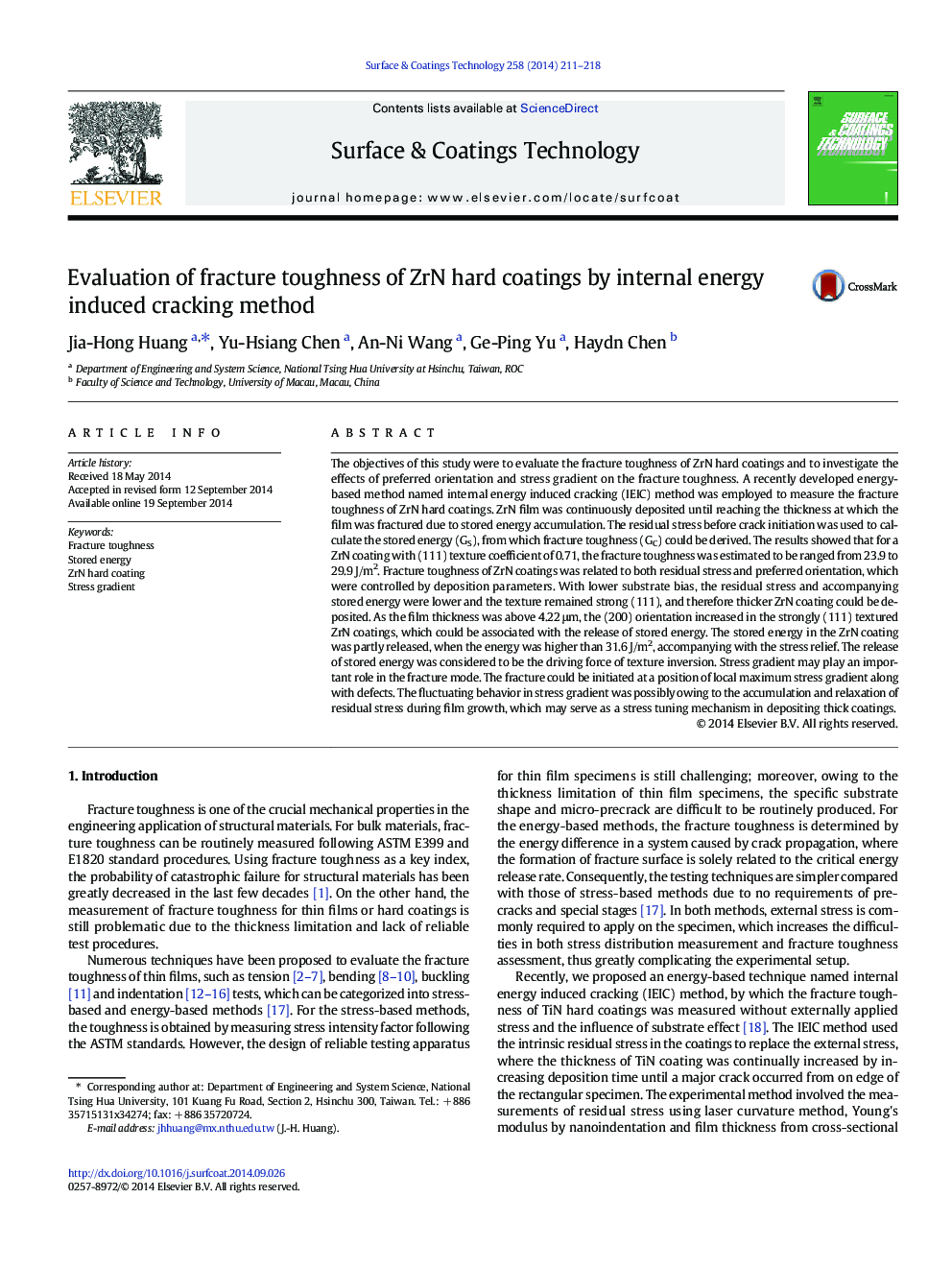| کد مقاله | کد نشریه | سال انتشار | مقاله انگلیسی | نسخه تمام متن |
|---|---|---|---|---|
| 8027230 | 1517620 | 2014 | 8 صفحه PDF | دانلود رایگان |
عنوان انگلیسی مقاله ISI
Evaluation of fracture toughness of ZrN hard coatings by internal energy induced cracking method
دانلود مقاله + سفارش ترجمه
دانلود مقاله ISI انگلیسی
رایگان برای ایرانیان
کلمات کلیدی
موضوعات مرتبط
مهندسی و علوم پایه
مهندسی مواد
فناوری نانو (نانو تکنولوژی)
پیش نمایش صفحه اول مقاله

چکیده انگلیسی
The objectives of this study were to evaluate the fracture toughness of ZrN hard coatings and to investigate the effects of preferred orientation and stress gradient on the fracture toughness. A recently developed energy-based method named internal energy induced cracking (IEIC) method was employed to measure the fracture toughness of ZrN hard coatings. ZrN film was continuously deposited until reaching the thickness at which the film was fractured due to stored energy accumulation. The residual stress before crack initiation was used to calculate the stored energy (GS), from which fracture toughness (GC) could be derived. The results showed that for a ZrN coating with (111) texture coefficient of 0.71, the fracture toughness was estimated to be ranged from 23.9 to 29.9 J/m2. Fracture toughness of ZrN coatings was related to both residual stress and preferred orientation, which were controlled by deposition parameters. With lower substrate bias, the residual stress and accompanying stored energy were lower and the texture remained strong (111), and therefore thicker ZrN coating could be deposited. As the film thickness was above 4.22 μm, the (200) orientation increased in the strongly (111) textured ZrN coatings, which could be associated with the release of stored energy. The stored energy in the ZrN coating was partly released, when the energy was higher than 31.6 J/m2, accompanying with the stress relief. The release of stored energy was considered to be the driving force of texture inversion. Stress gradient may play an important role in the fracture mode. The fracture could be initiated at a position of local maximum stress gradient along with defects. The fluctuating behavior in stress gradient was possibly owing to the accumulation and relaxation of residual stress during film growth, which may serve as a stress tuning mechanism in depositing thick coatings.
ناشر
Database: Elsevier - ScienceDirect (ساینس دایرکت)
Journal: Surface and Coatings Technology - Volume 258, 15 November 2014, Pages 211-218
Journal: Surface and Coatings Technology - Volume 258, 15 November 2014, Pages 211-218
نویسندگان
Jia-Hong Huang, Yu-Hsiang Chen, An-Ni Wang, Ge-Ping Yu, Haydn Chen,